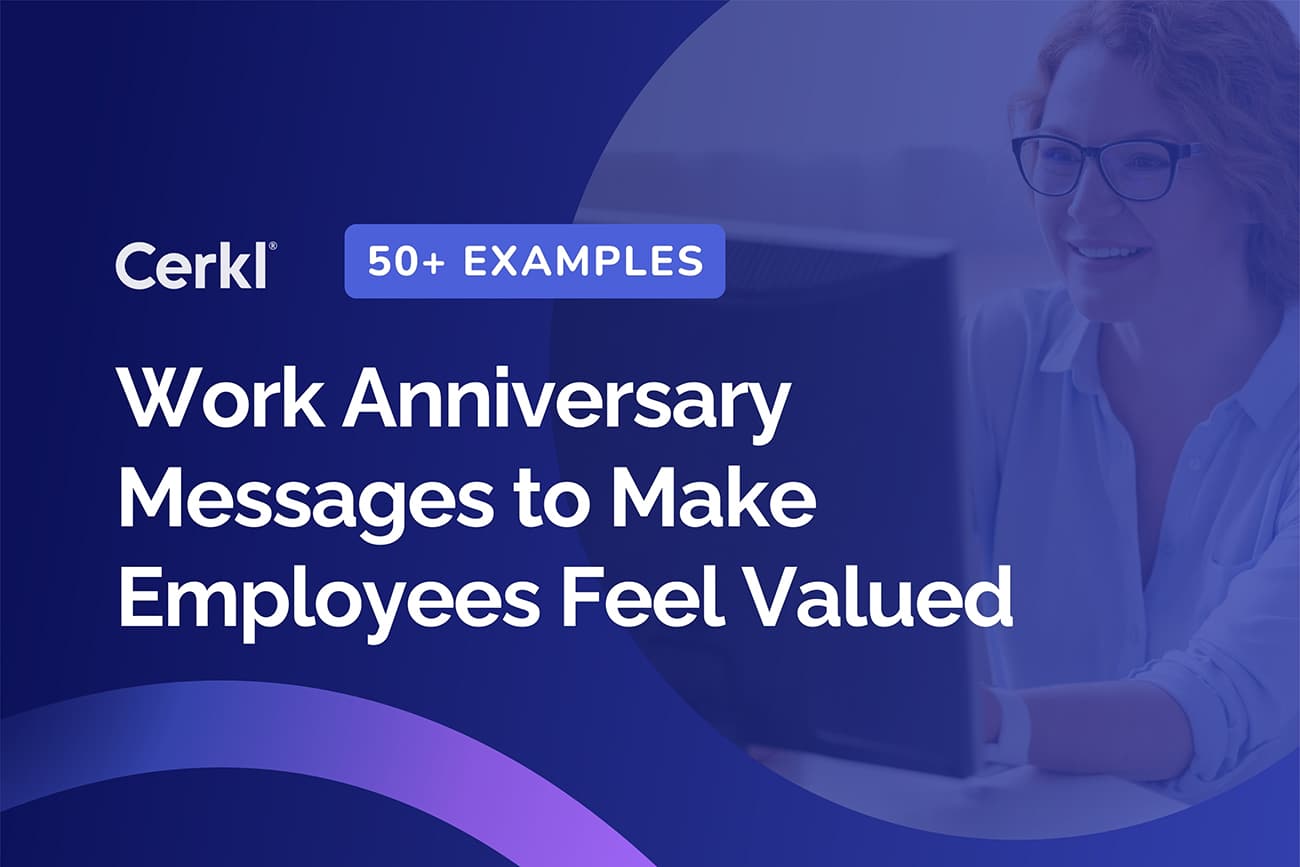 Employee Experience Best Practices
Employee Experience Best Practices
How to Leverage Employee-Driven Data to Improve Employee Experience
Leverage the power of employee-driven data to enhance engagement and satisfaction. Discover actionable insights and strategies for a better workplace experience.

.webp)
Discover Internal Communications’ ROI
Measure the ROI of using modern internal communications. Get the template for free without any risk or commitment.
Access NowEmployee experience is often seen as the ‘emotional’ component of work. But the truth is that it can have a tangible impact on the company’s bottom line. According to Gallup data, disengagement costs the global economy $8.8 trillion dollars in lost productivity.
Data is king when it comes to delivering the employee experience organizations expect. However, many are overlooking a goldmine of data that is the “voice of the employee”.
Employee-driven data can help HR leaders understand people’s ‘feelings’ at work and create better employee experiences.
We’re here to help you find out how to collect data from your employees about their well-being, productivity and motivation so that you can start making business decisions that are grounded in data.
What is Employee-Driven Data?
Employee-driven data refers to the insights and information gathered directly from employees. This data comes from their feedback, opinions, and experiences within the organization. It can be collected through various methods like surveys, interviews, or even suggestion boxes.
By using employee-driven data, HR leaders can better understand what motivates and engages their workforce. It helps identify areas for improvement and highlights what's working well.
Opening the doors to employee feedback also helps create a culture of transparency and trust, where employees feel valued and heard.
Free ROI Calculator to Measure Comms Impact
Quantify the financial benefits of your internal communications
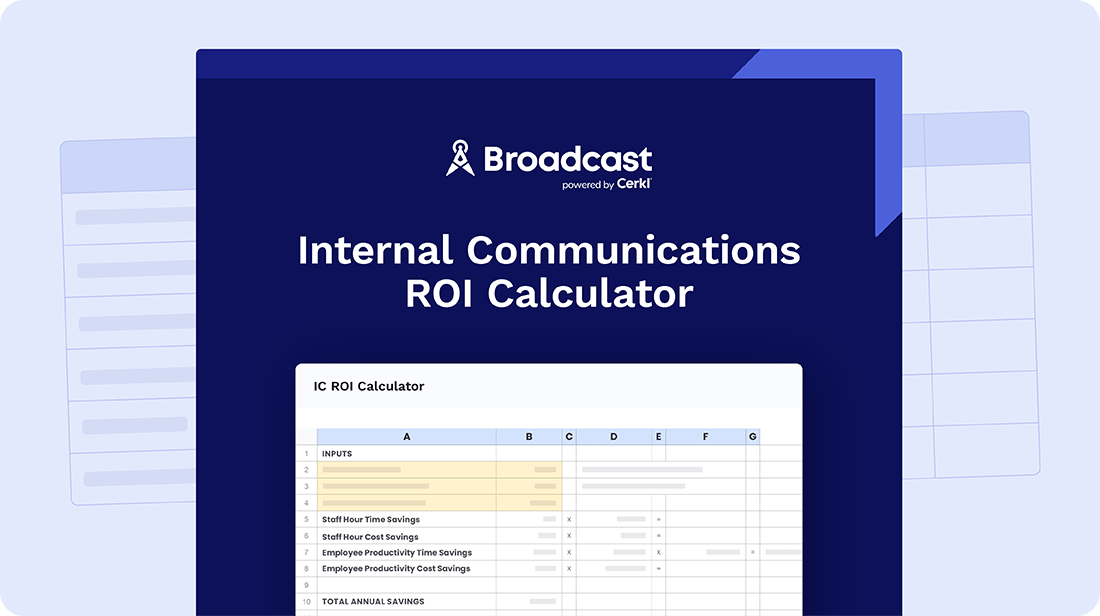
Download Free
Methods of Collecting Employee-Driven Data
There are multiple data collection methods that allow you to capture insights at different points of the employee journey. Choosing the right method depends on the type of information that is being collected. Of course, a mix of methods can be used for different purposes or employee populations. For example, web scraping software can help gather external data that complements internal insights, providing a more holistic view of factors affecting employee satisfaction.
Whichever method you use, make sure to create a safe space for employees to express themselves without fear of repercussion. Guaranteeing anonymity and confidentiality cultivates an environment where authenticity thrives, enabling candid and constructive feedback.
Here are some methods that you can use to collect feedback from employees:
Surveys and Questionnaires
Surveys and questionnaires are structured tools that allow you to gather feedback from a large number of employees efficiently. They typically consist of a series of questions designed to gauge employee opinions, satisfaction, and suggestions.
You can create surveys that include a mix of multiple-choice questions, rating scales, and open-ended questions to capture both quantitative and qualitative data. Then use an embedded analytics tool that can analyze the data and provide insights on trends and areas for improvement.
One-on-one Meetings
One-on-one meetings provide a private, personalized setting where employees can openly share their thoughts, concerns, and feedback with their managers or HR representatives.
For example, you can use this method to give employees the opportunity to express their views at important events such as promotions, returning from a prolonged leave, etc.
Prepare open-ended questions to encourage discussion and actively listen to the employee’s responses. Take notes and follow up on any actionable items discussed.
Focus Groups
Focus groups involve gathering a small group of employees to discuss specific topics in-depth. This method provides a deeper understanding of employee perspectives and group dynamics that might not surface through surveys or questionnaires.
It can also be useful for understanding employee attitudes towards a new HR policy, exploring ideas for improving workplace culture, or assessing the impact of a significant organizational change.
To implement this method, invite a diverse group of employees to participate in the focus group. Prepare a set of discussion topics or questions and encourage participants to share their experiences and opinions. Ensure a neutral facilitator leads the session to keep the discussion on track and capture all viewpoints.
Suggestion Box
A suggestion box is a simple yet effective tool that allows employees to submit their feedback, ideas, and concerns anonymously.
Place physical suggestion boxes in common areas and/or provide a digital suggestion box accessible via your company’s intranet. Regularly review the submissions and communicate any actions taken based on employee suggestions to demonstrate that their feedback is valued.
Employee Interviews
Employee interviews are typically in-depth, structured conversations aimed at understanding individual employee experiences, thoughts, and feedback. This method is ideal for gaining insights during exit interviews, performance reviews, or addressing specific concerns raised by employees.
Before conducting interviews, develop a list of questions tailored to uncover specific insights and be prepared to dig deeper based on the employee’s responses. Ensure confidentiality and use the gathered data to identify trends and areas for improvement.
Feedback Apps and Tools
Feedback apps and digital platforms are tools designed to streamline the feedback collection process. This will make it easier for employees to share their thoughts and for HR to analyze the data.
Select a feedback tool that aligns with your organization’s needs and integrate it into your existing systems. Utilize the tool’s analytics features to track trends, measure engagement, and identify actionable insights.
Town Hall Meetings
Town hall meetings are open forums where employees can voice their opinions, ask questions, and provide feedback directly to company leadership. Unlike focus groups, which tend to be for detailed exploration of specific subjects with a small group, town hall meetings invite all employees to participate and can cover a wide range of topics.
Organize regular town hall meetings, both in-person and virtually, to accommodate all employees. Create an agenda that includes time for Q&A sessions and encourage employees to submit their questions in advance.
Performance Reviews
Performance reviews are formal evaluations of an employee’s job performance, providing an opportunity for feedback and goal setting.
Conduct performance reviews on a regular basis (e.g., annually or bi-annually). Use a standardized evaluation form that includes space for both manager and employee feedback. Discuss achievements, areas for improvement, and set future goals. Ensure the conversation is a two-way dialogue, allowing employees to provide feedback on their experiences and support needs.
Peer Feedback
Peer feedback involves employees providing feedback to their colleagues, fostering a culture of mutual respect and continuous improvement.
Implement a structured peer feedback system, such as 360-degree feedback, where employees can give and receive feedback from their peers. Provide guidelines and training on giving constructive feedback. Use the feedback to identify strengths and areas for development, and incorporate it into performance reviews and personal development plans.
Observation
Sometimes it’s enough to observe employee interactions and behaviors to gain insights into workplace dynamics and identify potential issues.
Spend time in different departments and work environments observing how employees interact with each other and their tasks. Take note of any recurring patterns, such as communication barriers or teamwork challenges.
Use these observations to inform your understanding of the workplace culture and identify areas for improvement.
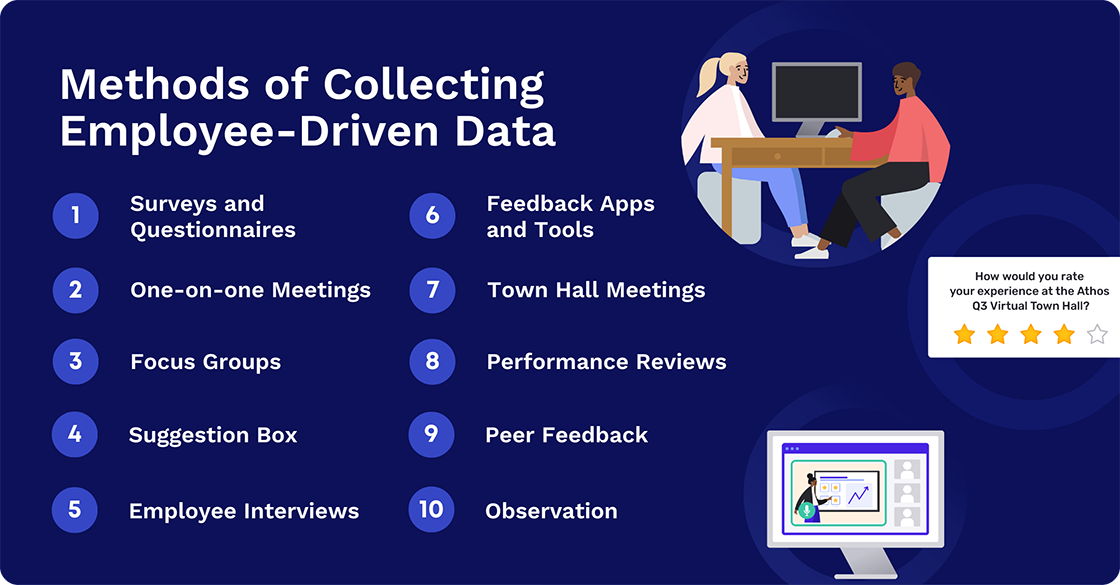
Analyzing and Interpreting Employee Data
The process of collecting data is just the initial step. The true impact comes from analyzing and using it.
Quantitative Analysis
Numbers tell a story, and quantitative analysis translates raw data into meaningful trends and patterns. By quantifying employee sentiments and experiences, organizations gain clarity on overarching themes and priorities.
You can analyze employee data such as:
- Employee Engagement Scores: These scores measure how committed and motivated employees are to their work and the organization.
- Turnover Rates: This metric tracks the percentage of employees who leave the organization within a specific period.
- Performance Metrics: These are quantifiable measures used to evaluate an employee's job performance and productivity.
- Absenteeism: This refers to the frequency and duration of employee absences from work, often indicating potential issues with job satisfaction or health.
- Training Effectiveness: This assesses how well training programs improve employee skills, knowledge, and performance on the job.
Qualitative Analysis
Looking beyond numerical data, examining stories and experiences offers deeper insights. This understanding enhances our grasp of the employee perspective and reveals opportunities for improvement.
Examples of qualitative analysis includes insights from:
- Exit Interviews: Conversations with departing employees to understand their reasons for leaving and gather feedback on their experience.
- Focus Groups: Small group discussions used to explore specific topics in depth and gain detailed insights from employees.
- Open-Ended Survey Responses: Feedback from surveys that allow employees to express their thoughts and opinions in their own words.
- Employee Testimonials: Personal stories and experiences shared by employees that provide insight into their perspectives and satisfaction.
- Observation of Employee Interactions and Behaviors: Monitoring how employees interact and behave in the workplace to identify patterns and areas for improvement.
Both quantitative and qualitative analyses are important for a comprehensive understanding of an organization's workforce. Quantitative data provides the statistical foundation for decision-making, while qualitative insights offer the narrative and context needed to interpret the numbers and make informed decisions.
Free ROI Calculator to Measure Comms Impact
Quantify the financial benefits of your internal communications

Download Free
Delivering a Better Employee Experience
Now that we have valuable insights, it's time to act.
Prioritize Initiatives
All feedback isn't the same. Prioritizing initiatives based on impact and feasibility ensures resources are allocated where they're needed most, maximizing the effectiveness of improvement efforts.
For example, if feedback reveals that the majority of employees feel overworked and stressed, prioritize initiatives that address workload management and work-life balance.
Tailor Strategies to Address Needs
A one-size-fits-all approach rarely suffices. Customizing strategies to meet the diverse needs and preferences of various employee groups promotes inclusivity and relevance, leading to long-lasting outcomes.
For instance, mid-career employees may be seeking opportunities for advancement and skill development, while younger employees may value flexibility to pursue personal interests or further education.
Monitoring Progress and Iterating
By keeping an eye on key metrics and being open to change, organizations can grow alongside their employees.
Monitoring key metrics provides a pulse check on the efficacy of implemented strategies and helps us see how well our plans are working. Whether it's employee engagement scores or turnover rates, tracking progress enables timely interventions and course corrections.
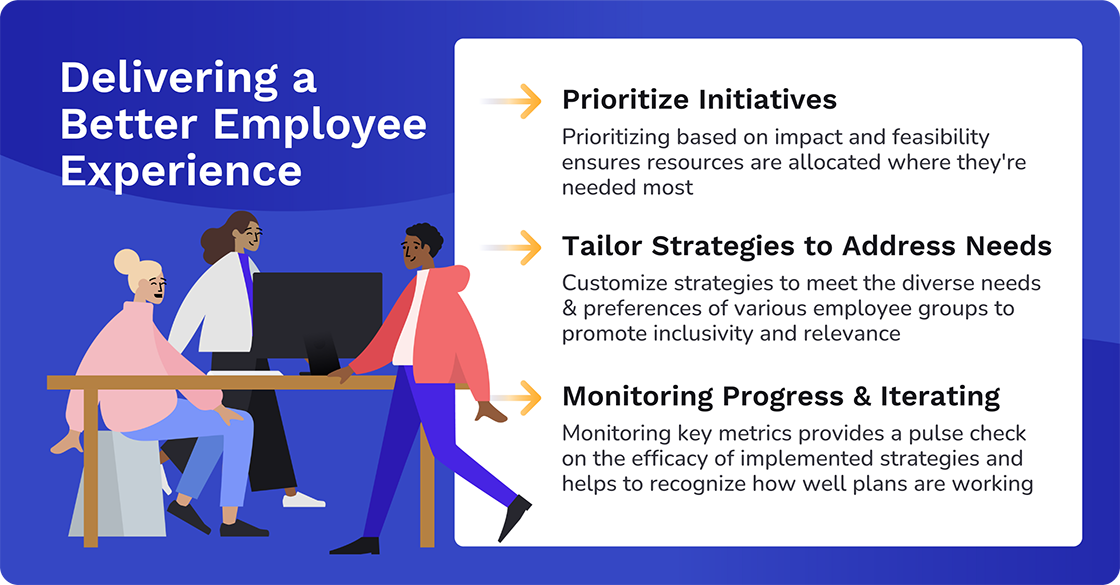
What’s Next?
There are plenty of ways you can improve the employee experience, just by listening to what employees have to say. Start by identifying which feedback collection methods and analytics tools best suit your organization's needs. Once you have the right practices in place, you’ll find it a lot easier to act on employee-driven data.
Author bio
Alexandre Diard is an accomplished Marketing leader with a genuine entrepreneurial spirit. His unwavering passion for innovation and technology is evident through his impressive track record. With over a decade of experience in the HR industry, Alexandre has consistently delivered groundbreaking solutions to HR leaders worldwide.
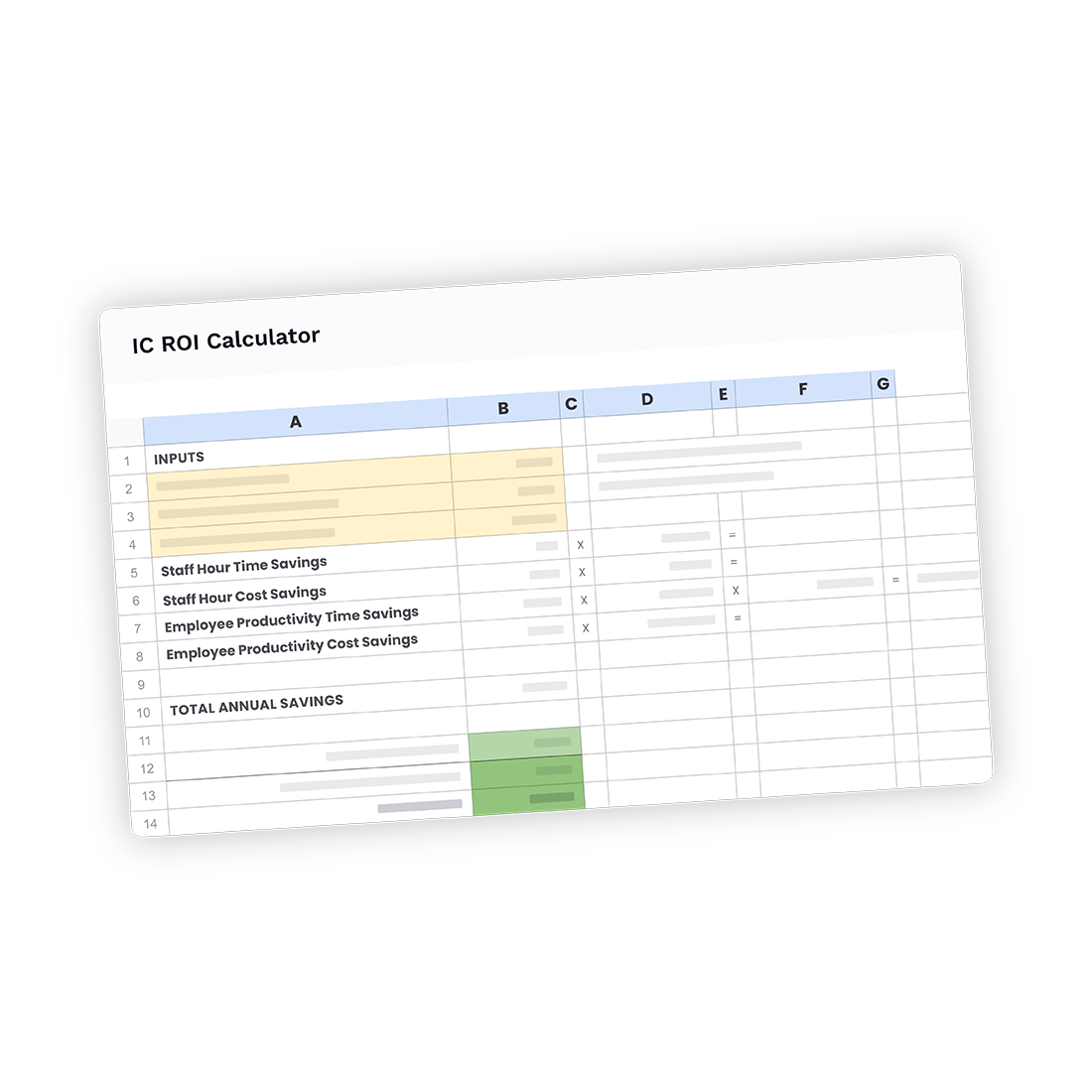
Free ROI Calculator to Measure Comms Impact
Quantify the financial benefits of your internal communications







